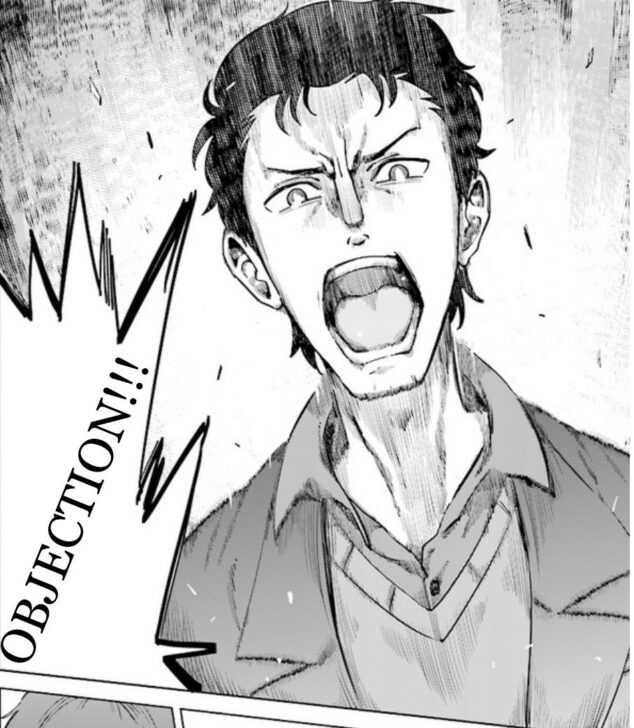Share this link via
Or copy link
Below are navigation links that will take you to the main text and navigation menus.
26,551 first names, 70,620 last names, 333,585 kanji variations.
one of the best Japanese name search tools for your baby!

Image by: Steins;Gate Aishin Meizu no Babel 1 ©5pb./ Nitroplus/ MAGES
Contents
Steins; Gate is an anime adaptation of a popular science fiction video game created by 5pb. and Nitroplus. Rintaro runs a group called the ‘Future gadgets laboratory’ with his friends Mayuri and Itaru to invent all sorts of items. One day, while attending a conference Rintaro finds the dead body of Kurisu, a famous young scientist. Panicked Rintaro instantly sent a message to Itaru about it but as soon as he did he collapsed. When he woke up, he immediately noticed some things were not the way he remembered and discovered that Kurisu was alive. The text he had just sent was received before he even sent it. After investigation, the laboratory members learned that their invention ‘Cell Phone-Microwave’ (a cellphone operated microwave) could send text messages to the past. Including Kurisu as a new member, the ‘Future Gadget Laboratory’ decides to create a real time machine.

Image by: Steins;Gate DVD cover ©5pb./ Nitroplus/ MAGES
It is also called Steins; Gate in the Japanese version and is written in Katakana ‘シュタインズ・ゲート’

Image by: Steins;Gate Aishin Meizu no Babel 1 ©5pb./ Nitroplus/ MAGES
In Japanese culture, names have significant meanings that are supposed to represent you as a person. Names can be expressed in hiragana, katakana, and kanji. Let’s find out the meanings of some names of the future gadgets laboratory members!

Image by: Steins;Gate Official website ©5pb./ Nitroplus/ MAGES
The main character Rintaro is so-called the ‘chuunibyou'(厨二病) which means the middle school second-year syndrome. This is a Japanese slang to describe someone who tries to act cool to impress people, often by imitating an anime character or even pretend to have special powers. ‘Oka’(岡) is a hill, ‘Be’(部) means parts, ‘Rin’(倫) means moral, and ‘Taro’(太郎) is a common ending for boys’ names.

Image by: Steins;Gate Comic 1 Ep 1 ©5pb./ Nitroplus/ MAGES
Rintaro often speaks to himself on the cellphone pretending there is an organization watching over him.

Image by: Steins; Gate Comic 1 Ep 1 ©5pb./ Nitroplus/ MAGES
He calls himself the insane mad scientist ‘Kyoma Hououin’(鳳凰院 凶真, Hō’ōin Kyōma). ‘Houou’(鳳凰) means phoenix, ‘In’(院) is an enclosed building surrounded by a fence, ‘Kyo’(凶) is bad luck and ‘Ma’(真) means true.

Image by: Steins; Gate Official website ©5pb./ Nitroplus/ MAGES
Mayuri is a kind and gentle girl who has been friends with Rintaro since childhood. The future gadgets laboratory members call themselves the ‘Rabomen'(ラボメン) (a short form for laboratory members) and are given a number. Mayuri is Rabomen Number 002. ‘Shii’(椎) is a kind of tree, ‘Na’(名) is a name, and Mayuri is written in Hiragana.

Image by: Steins; Gate Official website ©5pb./ Nitroplus/ MAGES
Itaru, the ‘Rabomen’ number 003 is a big, smart guy who has an incredible skill for hacking and programming. ‘Hashi’(橋) is a bridge, ‘Da’(田) is a paddy puddle, and ‘Itaru’(至) means leading to.

Image by: Steins; Gate Official website ©5pb./ Nitroplus/ MAGES
17-year-old genius girl Kurisu happens to witness the Cell Phone-Microwave and decides to join as ‘Rabomen’ 004. Rintaro calls her Christina because of the sound of her name. ‘Maki’(牧) means pasture, ‘Se’(瀬) means shallow, ‘Ku’(紅) means red, ‘Ri’(莉) means Jasmine, and ‘Su’(栖) means nest.
Here are some useful phrases from Steins; Gate which will help you along with your Japanese studies!

Image by: Steins;Gate Aishin Meizu no Babel 1 Ep 1 ©5pb./ Nitroplus/ MAGES
Since Rintaro is so dramatical when he goes against something he says ‘Igi ari’. This is a phrase often used in court. ‘Igi’(異議) means an objection and ‘Ari’(有り) means There Is. The word ‘Ari’ itself can be used as an expression for ‘Yes’ too. For example, ‘Is this a yes or a No?’ (これって korette あり? ari? それとも soretomo なし?nashi?) ‘Nashi’(無し) means not there and is the expression for ‘No’.
Sort by: Most Kanji Variations
Sorts names by how many different kanji spellings they have. In general, names with more variants tend to be more familiar and widespread in Japan (with some exceptions).
Sort by: Most Viewed
Sorts names by page views on this site. Views reflect global traffic (including Japan), so this does not represent popularity among Japanese people only. A high view count does not necessarily mean the name is famous in Japan.
What is Hiragana?
Hiragana is one of the two Japanese syllabaries. Each character represents a sound (mora), not a meaning. It is used for native words, grammatical particles, verb/adjective endings (okurigana), and to show pronunciation above kanji (furigana). It developed from cursive forms of kanji.
What is Katakana?
Katakana is one of the two Japanese syllabaries. Each character represents a sound (mora), not a meaning. It is mainly used to write foreign words and names, loanwords, onomatopoeia, and for emphasis.
What is English Transcription?
“English transcription” (romanization) is the romanized form of a Japanese name, intended to reproduce its pronunciation as closely as possible. It is also useful for searching names on this site.
Japanese-Style Nicknames
In Japan, nicknames are used to express familiarity and affection. Typical features include:
Shortened forms: Names are often shortened for closeness, e.g., “Yuki” from “Yukiko” or “Taka” from “Takashi”.
Suffixes: Terms like “-chan” (often for girls, also for young children) and “-kun” (often for boys) are used among family and close friends. Among very close adults, “-chan” may still be used. More details
Use & context: Nicknames are informal—common among friends, family, or close colleagues—and are not suitable for formal or professional settings. Their use implies a certain degree of intimacy.
Long vowels: The long vowel mark “chōonpu” (ー) extends the preceding vowel. For example, “あーちゃん” (A-chan) lengthens the “あ” sound.
Households
Sorts surnames by the estimated number of Japanese households that use them. More households generally indicates a more common or well-known surname.
About our last-name data
